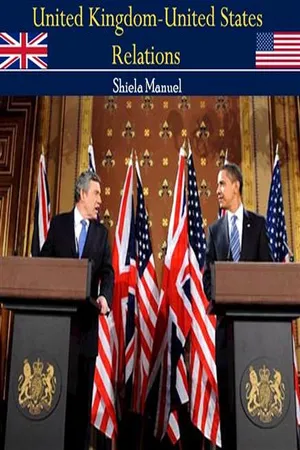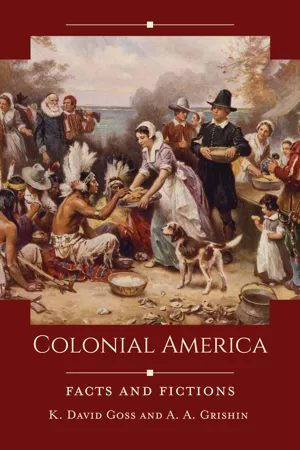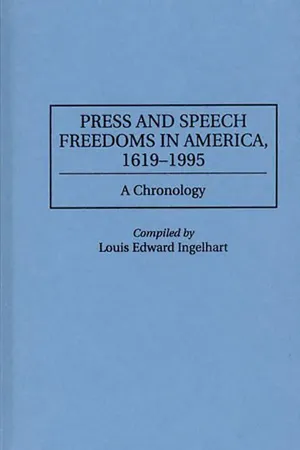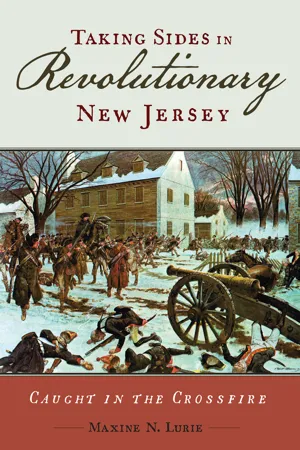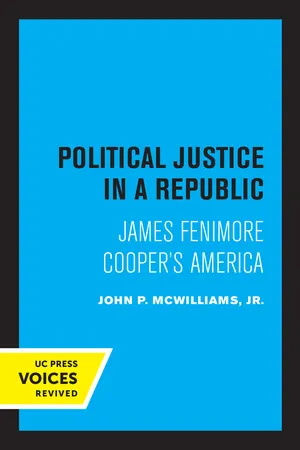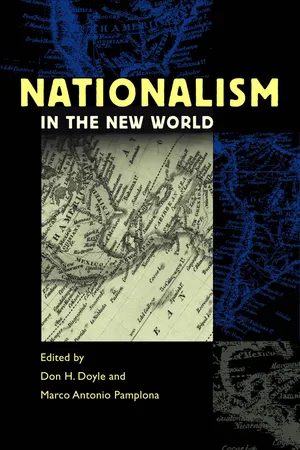History
Patriots American Revolution
The Patriots in the American Revolution were the colonists who rebelled against British rule and sought independence from Great Britain. They were motivated by a desire for self-governance, individual rights, and economic freedom. The Patriots played a crucial role in the Revolutionary War and ultimately secured the establishment of the United States of America as an independent nation.
Written by Perlego with AI-assistance
Related key terms
1 of 5
7 Key excerpts on "Patriots American Revolution"
- No longer available |Learn more
- (Author)
- 2014(Publication Date)
- Orange Apple(Publisher)
Loyalties and allegiances varied widely not only within regions and communities, but also within families and sometimes shifted during the course of the Revolution. Patriots At the time, revolutionaries were called Patriots, Whigs, Congress-men, or Americans. They included a full range of social and economic classes, but a unanimity regarding the need to defend the rights of Americans. After the war, Patriots such as George Washington, James Madison, John Adams, Alexander Hamilton, and John Jay were deeply devoted to republicanism while also eager to build a rich and powerful nation, while Patriots such as Patrick Henry, Benjamin Franklin, and Thomas Jefferson represented democratic impulses and the agrarian plantation element that wanted a localized society with greater political equality. The term Patriot refers to a person in the colonies who sided with the American Revolution. Calling the revolutionaries Patriots is a long-standing historical convention, which began prior to the war. For example, the term “Patriot” was in use by American colonists during the 1760s. Generally speaking, during the Age of Enlightenment, the word Patriot was not used interchangeably with nationalist, as it is today. Rather, the concept of patriotism was linked to enlightenment values concerning a common good, which transcended national and social boundaries. Patriotism, thus, did not require someone to support their leader's actions or a nation's policies in all circumstances, and there wouldn't necessarily be a contradiction between being a Patriot and revolting against king and country. ________________________ WORLD TECHNOLOGIES ________________________ Role of women Abigail Adams Women contributed to the American Revolution in many ways, and were involved on both sides. - eBook - PDF
- Jane Kamensky, Carol Sheriff, David W. Blight, Howard Chudacoff(Authors)
- 2018(Publication Date)
- Cengage Learning EMEA(Publisher)
Where patriots saw Sons of Liberty acting “with manly firmness” (as the Declaration put it) against British tyranny, those loyal to the Crown saw armed insurgents—“Sons of Anarchy,” some called them—taking vigilante action against “Friends of Government” who defended the very notion of order. To Native Americans, land meant liberty, and the rise of the new nation threatened it. To African Americans—roughly a fifth of the mainland population—liberty meant freedom from slavery; their loy- alty belonged to whoever would help them secure it. For Britain’s ministers, the fate of twenty-six American colonies, not just the thirteen rebellious ones, hung in the balance. And Spain and France knew that the balance of power in Europe as well as North America must change with the out- come of the rebels’ fight for independence. 6-3a Patriots Many though by no means most residents of the thirteen rebel colonies supported resistance and then backed independence. Active revolutionaries accounted for no more than two-fifths of the European American popu- lation. Among them were small and middling farmers, members of dominant Protestant sects (both Old and New Lights), Chesapeake gentry, merchants handling American commodities, urban artisans, elected officeholders, and people of English descent. Wives usually, but not always, fell in with their husbands about politics. Although such groups supported the Revolution, they pursued divergent goals within the broader coalition, much as they had in the 1760s. Some patriots sought more sweeping political reform than others; many fought for social and economic change instead or as well. Some colonists, though, could not endorse indepen- dence. Like their patriot friends and neighbors, most had objected to parliamentary policies in the 1760s and 1770s, but they favored imperial reform rather than rupture. - eBook - ePub
Colonial America
Facts and Fictions
- K. David Goss, A. A. Grishin(Authors)
- 2021(Publication Date)
- ABC-CLIO(Publisher)
8The American Revolution Was Fought by United Patriots against an Evil OppressorWhat People Think HappenedPerhaps no one has done a better job at clearly distilling the great myths of the American Revolution than the noted historian and scholar Dr. Carol Berkin, in three sentences, when she states,For most Americans, young and old, the history of the American Revolution can be summed up something like this: In 1776, all the colonists rose up in unison to rebel against a tyrannical king and the horrible burden of unfair taxes the British had imposed upon them for over a hundred years. During the long war that followed, citizen soldiers shivered in the cold, shared the hardships together, admired George Washington, and won the war single-handedly against the most powerful army in the world. Then they created a democracy and everyone lived happily ever after. (Berkin 2009)Berkin packed a good number of misconceptions into this succinct passage, and some of them would require a dedicated treatment. However, the most important myth about the American Revolution lies in the perception of this great event’s moral nature, easily reducible to the struggle between good and evil.The relatively short span of American history (when compared to histories of most other nations) is rich with events that are not easy to digest. Many old wounds in this country’s past are still healing.People like to believe that there was a time when the entire population of the country’s founding colonies were predominantly of English descent and showed a remarkable union in thought and action. These colonists fought bravely against their uniformly tyrannical common enemy, the British Empire, led by an equally repressive royal tyrant, King George III. This then becomes a two-sided myth that first implies that British colonists were fighting against a hostile mother country committed to depriving the colonies of their rights. - eBook - PDF
Press and Speech Freedoms in America, 1619-1995
A Chronology
- Louis E. Ingelhart(Author)
- 1997(Publication Date)
- Greenwood(Publisher)
Chapter 4 THE PATRIOTS AND THEIR REVOLUTION 1760 THROUGH 1786 General Events and Perspectives 1763—Most Colonials believed England's traditional constitution was the most perfect one that human powers with finite wisdom had contrived for the preservation of liberty and the production of happiness. l 1769—Andrew Eliot said that the only hope was in an American Bill of Rights. 2 1774—The first Continental Congress met in Philadelphia and urged civil disobedience to English laws. 3 1774—Philip Livingston said legal rights are those rights we are entitled to by eternal laws of right reason. 4 1775—The Continental Congress resolved in 1775 that any member who divulged any part of its proceedings without consent was to be expelled and deemed an enemy to the liberties of America. 5 1775—Alexander Hamilton said that: The sacred rights of mankind are not to be rummaged for among old parchments or musty records. They are written, as with a sunbeam, in the whole volume of human nature, by the hand of divinity itself, and can never be erased or obscured by a mortal power. 6 Later he said, "Civil liberty is only natural liberty, modified by the sanctions of civil society." 26 / The Patriots and Their Revolution 1779—Thomas Paine had to resign as secretary to the Committee on Foreign Affairs for his Pennsylvania Packet revelation that the United States had secretly accepted aid from France. 7 1783—Massachusetts discontinued slavery. 1785—Delegates from five states urged the Continental Congress to call a constitutional convention in Philadelphia. 8 1785—James Madison was determined to defeat the religious assessments bill in the Virginia Assembly, so he wrote a remonstrance which helped defeat it. He advocated man's natural right to freedom of conscience. 9 Events Leading to the American Revolution 10 From 1763 through 1775, the English ministers and Parliament and their colonial administration indulged in a series of repressive measures that infuriated the colonials. - eBook - PDF
Taking Sides in Revolutionary New Jersey
Caught in the Crossfire
- Maxine N. Lurie(Author)
- 2022(Publication Date)
- Rutgers University Press(Publisher)
Of the 673 men who graduated between 1748 and 1783 only thirteen (or approximately 2 percent) were Loyalists.3 This was connected to the teaching of its president, Reverend John Witherspoon, and to the political and religious beliefs of faculty, students, and many others in the state who supported the Revolution. They believed the actions of the British gov- ernment, from the Stamp Act through what they called the Intolerable Acts of 1774, to be constitutionally wrong and a violation of their rights initially as Englishmen, and then as men. Influenced by evangelical religious beliefs (whether Presbyterian, Dutch Reform, or Baptist) they thought Britain and its leaders were immoral tyrants. They were often among those strongly opposed to a colonial bishop, fearing the consequences for the religious toleration of the colony. This can be seen in the documents quoted in chapter 1: the Stamp Act Resolutions, the state Constitution, and the assembly letter to the militia of 1776, and others that will follow. Once British and Hessian troops arrived in the colo- nies, and then particularly on New Jersey soil, Patriots were offended, even horrified, certainly angered, by the actions and destruction this enemy brought as it marched through the state, and then conducted repeated raids from New York City, Staten Island, and Pennsylvania. For some Patriots these actions increased their determination. This is reflected in the poem quoted earlier, and in many of the brief biographical accounts that follow.4 They are stories about both the “adamant” Patriots and what their determination cost them. The Adamant Costs for Patriots Everyone knows that in the end the Patriots won the war, and the United States gained independence. But this was a costly victory, even for many of those who ended up on the “winning” side. Examples of those from New Jersey who paid a price for the stand they took include both political and religious leaders. - eBook - PDF
Political Justice in a Republic
James Fenimore Cooper's America
- John P. McWilliams Jr.(Author)
- 2023(Publication Date)
- University of California Press(Publisher)
1. The American Revolution: Problems of Patriotism It can never be too often repeated, that the time for fixing every essential right on a legal basis is while our rulers are honest, and ourselves united. From the conclusion of this war we shall be going down hill. It will not then be necessary to resort every moment to the people for support. They will be forgotten, there- fore, and their rights disregarded. They will forget themselves, but in the sole faculty of making money, and will never think of uniting to effect a due respect for their rights. The shackles, therefore, which shall not be knocked off at the conclusion of this war, will remain on us long, will be made heavier, and heavier, till our rights shall revive or expire in a convulsion. THOMAS JEFFERSON, Notes on Virginia IN COOPER'S mind, the American Revolution formed the watershed of political history. If Cooper was to de- fine American values for his country, he had to decide upon the essential significance of the revolutionary war. Five of Cooper's novels written before 1830 are concerned with the struggle for independence. The Spy and Lionel Lincoln deal with the revolutionary war directly. Three sea tales, The Pilot, The Red Rover, and The Water Witch, form a trilogy that describes the emergence of revolutionary fervor in America from the 1720s to the 32 The American Revolution 33 outbreak of battle. 1 Notions of the Americans, the Euro- pean travel volumes, and the History of the Navy assess the war historically. Of the novels written after 1830, only Wyandotte is primarily concerned with the revolu- tionary era, yet the American War for Independence is frequently introduced as a reference point to establish historical contrasts. Like Henry Adams in the Education, Miles Wallingford and the Littlepages hearken back to revolutionary times as a standard of political value against which the present is measured. - eBook - PDF
- Don Doyle, Marco Pamplona(Authors)
- 2010(Publication Date)
- University of Georgia Press(Publisher)
greene English laws and privileges; and, perhaps most important of all, a general ten-dency among people in the home islands to regard them as “others” who fell considerably short of metropolitan standards. 2 Nothing brought home more forcefully to colonists the problematic charac-ter of their claims to a British identity than the various measures at issue be-tween the colonies and Britain between 1764 and 1776 . At bottom, the colonists objected to being taxed and governed in their internal affairs without their consent precisely because such measures were contrary to the rights and legal protections traditionally enjoyed by free or “independent” Britons and thus called into question their identity as British people. The vociferousness of their objections proclaimed the profound importance they continued to attach to maintaining that identity. Indeed, what came to be known as the American Revolution was to a significant degree a direct outgrowth of colonial resistance to those measures and should be understood as a movement by colonial Britons to secure metropolitan acknowledgment of their British identity. Before the winter of 1775 – 76 , when sentiment for independence became widespread, union among the colonies was principally a means to this end. 3 Important as it was, the colonists’ shared identity as freeborn and Protes-tant Britons was always mediated through a set of colonial identities. Over the years each colony, as a separate and semiautonomous social and political entity, evolved a specific corporate identity peculiar to itself. Rooted in a particular physical space, manifested in a specific form of socioeconomic organization, extended, modified, and refined by decades of collective experience, and inter-nalized by several generations of Creoles and immigrants, these colonial iden-tities and the loyalties and commitments associated with them had, by the era of the American Revolution, become powerfully entrenched.
Index pages curate the most relevant extracts from our library of academic textbooks. They’ve been created using an in-house natural language model (NLM), each adding context and meaning to key research topics.
